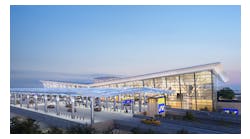Negotiating a lease is still one of the more difficult challenges facing airport management and tenants today. Both sides are trying to get the best business deal, while recognizing that they have to live with this business partner for the next 20, 30, maybe even 40 years. So maybe trying to squeeze out that last dollar from that lease isn’t really that important in the long run. A lease represents a partnership and a partnership must be beneficial to both parties in order for it to thrive. Regardless, there are several new paradigms that tenants and landlords are dealing with today, as well as some of the same challenges that have been around for decades.
Market Value
The approach of most airports has historically been to focus on getting market value (or fair market value) from all of their leases. The justification is usually “the FAA requires us to.” However, a few years ago the FAA somewhat changed, or at least clarified, its position with regard to market value. In simple terms, the FAA now states that airports must get market value/market rent for leases of non-aeronautical properties. Market rent is defined as: The most probable rent that a property should bring in a competitive and open market reflecting all conditions and restrictions of the lease agreement, including permitted uses, use restrictions, expense obligations, term, concessions, renewal and purchase options, and tenant improvements (TIs). On the other hand, the FAA states that aeronautical leases must be “fair and reasonable.”
So what does this mean? For non-aeronautical properties, it means that an airport should base its lease rates and terms on what the market is recognizing for similar non-aeronautical properties in the surrounding and/or similar and competing marketplace around the airport — not on the airport. With non-aeronautical properties, you are competing with other non-aeronautical property in the neighborhood, not with other airports in most cases. It also dictates that consistency with the non-aeronautical marketplace should not only look at land/property values of similar properties in the neighborhood, but that other lease terms and conditions should also be considered. This includes such items as lease term, rates of return, adjustment mechanisms, etc. While these factors may ultimately be similar to what you are able to generate on the airport, they could be more or less depending upon the supply and demand characteristics of both markets. For example, while you may be able to get a 10 percent rate of return on “appraised” values on-airport, the market rate of return for similar properties off-airport may only be 7 percent to 8 percent. As such, in order to maximize your development opportunities from non-aeronautical land or facilities owned by the airport sponsor, you may need to expand or narrow your definition of the competing market. It all depends upon who you are competing with.
With regard to aeronautical properties, the FAA uses the term “fair and reasonable.” Why does the FAA do this? In my opinion, it stems from the recognition that airports are unique and the number of active market participants — those that are looking to lease property on an airport — is much more limited than for off-airport, general real estate opportunities. Nevertheless, if you refer back to the definition of market rent, you can see that much of it still applies. The challenges facing aeronautical tenants are much more significant, although some factors are consistent with their off-airport cousins. While some airports derive their rental rates through the analysis of off-airport land values and the application of a predetermined rate of return, it is my experience that this methodology is the exception rather than the traditional practice at airports. Nevertheless, it is still common for some airports to compare sales of off-airport, non-aeronautical real estate to support the value/rent for on-airport aeronautical property. However, the unique characteristics of aeronautical properties are not reasonably compared to off-airport properties utilized for non-aeronautical purposes. The comparison with off-airport land values is deemed inappropriate for a number of reasons.
- Lease conditions (leasehold interest vs. fee simple ownership)
- Lack of benefits of land ownership (appreciation)
- Lack of a purchase option
- Reversion of improvements or the cost of demolition upon lease expiration
- Lack of subordination
- Difficulty in assigning a lease interest
- Undetermined and unpredictable rent escalations
- Aviation use restrictions
- Difficulty in obtaining and the increased cost of leasehold financing
- Differing supply and demand characteristics
- More limited demand due to fewer market participants compared to general real estate
My opinion has not changed over the years — airports should derive their rents through a comparison and analysis with other similar and competing airports within their region and/or competitive marketplace. In many cases, the competitive marketplace may extend to a national basis depending upon the type of property or activity. While it is not an exact or perfect method, it is more likely to provide an “apples to apples” comparison that is fair and reasonable to both parties.
Other Challenges
So now what? Comparing “airports to airports” and “airport properties to airport properties” is challenging at best. As the saying goes, “If you’ve seen one airport, you’ve seen one airport.” In other words, if you found two airports exactly alike, you won’t find two properties on those airports exactly alike. Similarly, if you find two identical properties, the airports are probably very different. Therefore, you almost always have to make some subjective “fair and reasonable” adjustments and/or concessions to generate something usable for comparison. Unfortunately, your definition of “fair and reasonable” is probably going to be very different from your counterpart across the table in a lease negotiation.
Unfortunately, that is just where the challenges start. Airport leases do not happen every day. If an airport does a new lease every 2 to 3 years, they are pretty busy. If you want to specifically look at a particular property type on an airport — cargo, FBO, corporate hangar, MRO, etc. — the time between new leases may be more like 10 to 20 years. For those of you that have read my past articles, you know that I am an advocate of comparing similar property types/uses as opposed to a one-size-fits-all rate for all airport property. I emphasize the term new lease because there are major differences in current lease rates that have recently been negotiated compared to those that have been adjusted over time by the CPI or other index to yield the current rate. Even if the current rate is set by an appraisal or market rent analysis to adjust the rate to “current market levels,” there are several issues that most airports and their appraisers/consultants typically fail to recognize.
First of all, markets change. A lease negotiated in 2007 at the peak of the economy and aviation market is likely inappropriate for consideration today, even if — and probably especially if — it has been adjusted over time based upon some index. Even if it has been reappraised, most lease terms and conditions provide that a rate cannot go down, regardless of prevailing market conditions. Second, every lease has a different genesis, even if it was negotiated at the same time as another. This is where fair and reasonable, as well as equitability, comes into play.
Let’s say that there is a cargo development on an airport that was constructed 20 years ago at a cost of $20 million that has a 50-year ground lease on a 20-acre site with rent fixed at 10 cents per square foot for the full lease term. A developer approaches the airport about a new $5 million cargo development on a 5-acre site, and would like the same 10 cents per square foot fixed rent deal for 50 years as the existing project. Can/should the airport agree to these terms? While it depends, it is sometimes the right answer, in this case the answer is a resounding no. First of all, the existing lease is 10 years old. Even if it was adjusted periodically by the CPI or other index, it is still a 20-year-old lease. Second, the FAA does not look favorably on 50-year or fixed rent aeronautical leases today. Third, a site reflecting one-quarter of the land area of another, and capital investment of 25 percent of another, may warrant some consideration for adjustment. Basically, the lease terms proposed by the developer are not equitable to those of the existing lease, because the only real similarities are that they are both on the same airport and both are for cargo developments.
The same approach comes into play when you are comparing rates between airports. While airports are not created equal, neither are leases. Unfortunately, many airports and tenants want to look at lease rates and terms at face value, without delving into the details that may tell a completely different story. Some of the things that can and do ultimately impact the lease rate include:
- Date of lease commencement
- Lease term (number of years) and renewal options
- Adjustment terms
- Initial capital investment requirements (both in facilities and infrastructure)
- Future capital investment requirements
- Location
- Existing competition
- Minimum standards (barriers to entry)
- Lease structure (triple net or airport paid expenses)
- Other rates and fees
- Rates of return
In addition, there is often a significant difference in the rate that an airport quotes to a prospective tenant and what they are actually able to get from that tenant after all of the terms and conditions are negotiated. Again, it comes down to neither party taking information at face value without getting into more details that may tell another side of the story.
While the above factors come into play on every lease, they are even more significant when they are tied to a commercial aeronautical business. Commercial aeronautical businesses are in business to make money. As such, the above factors can have a dramatic impact on their ability to amortize any investment that will drive their interest in locating at a particular airport. While I am not suggesting that an airport needs to cater to a prospective business to insure they make money, it is imperative that they understand that they do have to obtain a reasonable revenue stream in order to maintain facilities, retain employees and growth the business. This is obviously in the best interest of the airport as well. At the same time, the business needs to realize that the airport has a fiduciary responsibility and must ensure that the airport is developed in a methodical manner and reflects a tenant base that provides the array of services demanded by tenants and users of that particular airport.
The Rest of the Story
I have tried to address some of the major challenges that I see across the country with regard to leases. “Things are not always as they seem,” is extremely prevalent in the aviation industry. This is not anyone’s fault in particular, just one of the obstacles to running a successful airport or business within limited time and resource constraints. It is imperative that both sides in a negotiation are operating from an informed and educated position, so that each side can have a clear understanding of the challenges of the other while trying to facilitate a deal that benefits everyone.
It all comes down to information. When it comes to airports, every lease sets the precedent for the next lease. However, every “good” lease sets the precedent for the airport’s negotiating position, while every “bad” lease sets the precedent for the tenant’s position. Sometimes the key to a successful deal is that both sides feel like they have lost, and other times that each feels like they have won. The reality is that there should probably be a little of both experienced by both sides of the table, but with enough reliable and detailed information to understand why you won or lost.
Michael A. Hodges, MAI is the president and CEO of Airport Business Solutions, a diverse aviation valuation and consulting company based in Tampa, Fla. Airport Business Solutions assists airports and aviation businesses worldwide on a variety of property, business, operational and marketing issues. Michael is also the president and CEO of ABS Aviation, a contract management company for FBOs and general aviation airports.



